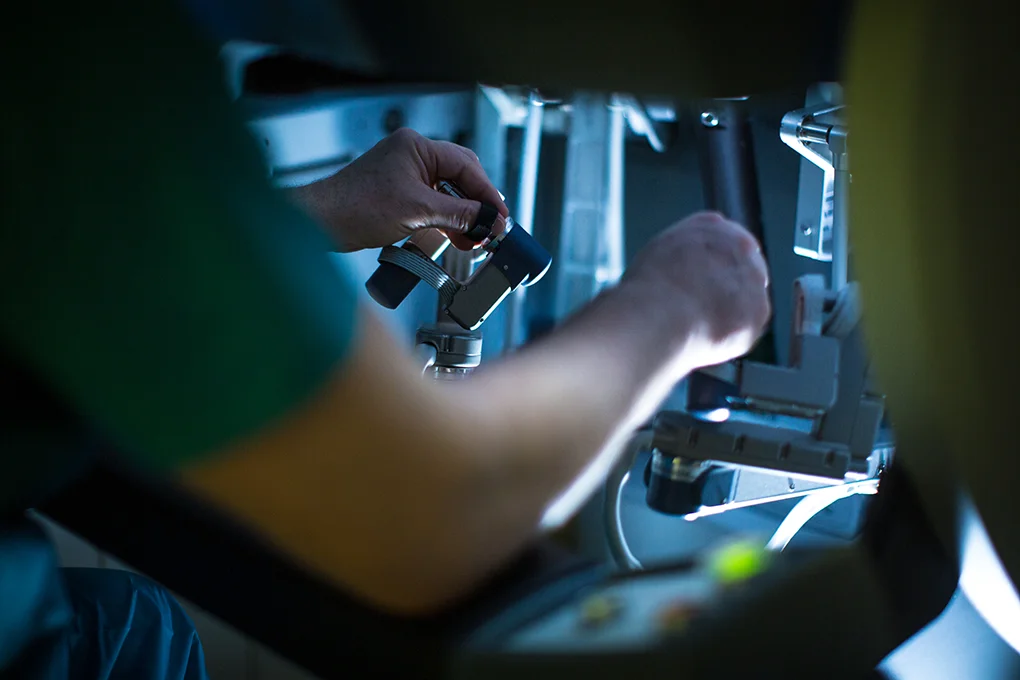Orthopaedic surgery has undergone a revolutionary transformation with the development of robotics and digital technology. As innovation continues to redefine medical procedures, robotic-assisted joint replacement has emerged as an advanced approach to improving surgical precision, minimising invasiveness, and enhancing patient outcomes. Dr Yas Edirisinghe, a leading orthopaedic surgeon at Ortho Precision, integrates these advancements to provide the highest level of care in hip and knee surgery, sports injuries, and trauma management.
How Robotics is Transforming Joint Replacement Surgery
Traditional joint replacement techniques, while effective, have certain limitations in terms of accuracy and personalisation. The integration of robotic technology into orthopaedic surgery has changed how orthopaedic surgeries are performed, offering an unparalleled level of precision and patient-specific solutions. Robotic-assisted systems help in preoperative planning, intraoperative guidance, and enhanced post-surgical outcomes, ensuring that every procedure is tailored to the unique needs of the patient.
Robotic systems utilise real-time data and 3D imaging to assist surgeons in making precise cuts and placements.
This technology allows for:
• Enhanced Accuracy: Robotics provide detailed mapping of the patient’s anatomy, ensuring implants are placed with enhanced precision.
• Minimally Invasive Procedures: Smaller incisions lead to reduced tissue damage, faster healing, and less post-operative pain.
• Improved Alignment and Longevity: Accurate placement reduces wear and tear on the implant, leading to better long-term function and durability.
• Patient-Specific Customisation: Each surgical approach is adapted to the patient’s unique anatomy, optimising movement and comfort post-surgery.
Game-Changing Robotic-Assisted Knee Replacement
Knee replacement surgery has seen a major evolution with robotic technology. Dr Yas Edirisinghe employs state-of-the-art robotic assistance to achieve kinematic alignment, a highly personalised approach that positions the knee implant based on the patient’s natural anatomy rather than a one-size-fits-all technique. This ensures a more natural knee movement, improved stability, and better long-term function. During surgery, real-time data assists Dr Yas in making precise adjustments, reducing soft tissue damage, and leading to a quicker and more comfortable recovery.

The Role of Robotics in Hip Replacement Surgery
Hip replacement surgery has also been significantly refined through robotics and digital innovation. Dr Yas uses 3D modelling and computer-assisted navigation to ensure precise implant positioning, which enhancing stability and range of motion. This advanced approach allows patients to regain mobility and return to an active lifestyle with greater confidence.
By customising the implant based on each patient’s unique hip structure, robotic-assisted surgery reduces the risk of complications such as dislocation and implant wear-and-tear.
Patients who undergo robotic-assisted hip replacement can expect:
• A more natural hip movement post-surgery.
• Improved implant longevity.
• Faster return to activities like yoga, golf, and tennis.
The Benefits of Choosing Robotic-Assisted Surgery
Patients considering joint replacement surgery can benefit from the integration of robotics and digital technology.
Key advantages include:
• Reduced Surgical Risks: Enhanced precision reduces the risk of complications, such as misalignment or implant failure.
• Shorter Hospital Stays: Minimally invasive techniques promote faster recovery and reduce hospitalisation time.
• Improved Patient Satisfaction: Patients experience less post-operative pain and regain mobility sooner.
• Long-Term Durability: Precision-driven implant placement increases the lifespan of joint replacements.
The Future of Orthopaedic Innovation
As technology continues to evolve, the future of joint replacement surgery is set to become even more refined and patient-centric. AI-driven diagnostics, robotic advancements, and digital rehabilitation solutions will continue to shape the way orthopaedic procedures are performed.
Dr Yas Edirisinghe remains committed to staying at the forefront of these innovations, ensuring that his patients benefit from the most advanced surgical techniques available. Whether it’s hip or knee replacements, sports injuries, or trauma care, his expertise in robotic-assisted surgery sets a new standard in orthopaedic excellence.
Robotic-assisted joint replacement surgery is transforming the field of orthopaedics, offering greater precision, improved patient outcomes, and enhanced recovery. As an innovator in orthopaedic surgery, Dr Yas Edirisinghe leverages cutting-edge technology to provide personalised, high-precision joint replacements that improve quality of life. If you’re considering joint replacement surgery, exploring the benefits of robotic assistance with an expert like Dr Edirisinghe could be your key to a faster, more effective recovery.
Advanced, patient-centred technology for better outcomes.
Contact us via the contact page or chatbot available across our website and Dr Yas will respond promptly.
